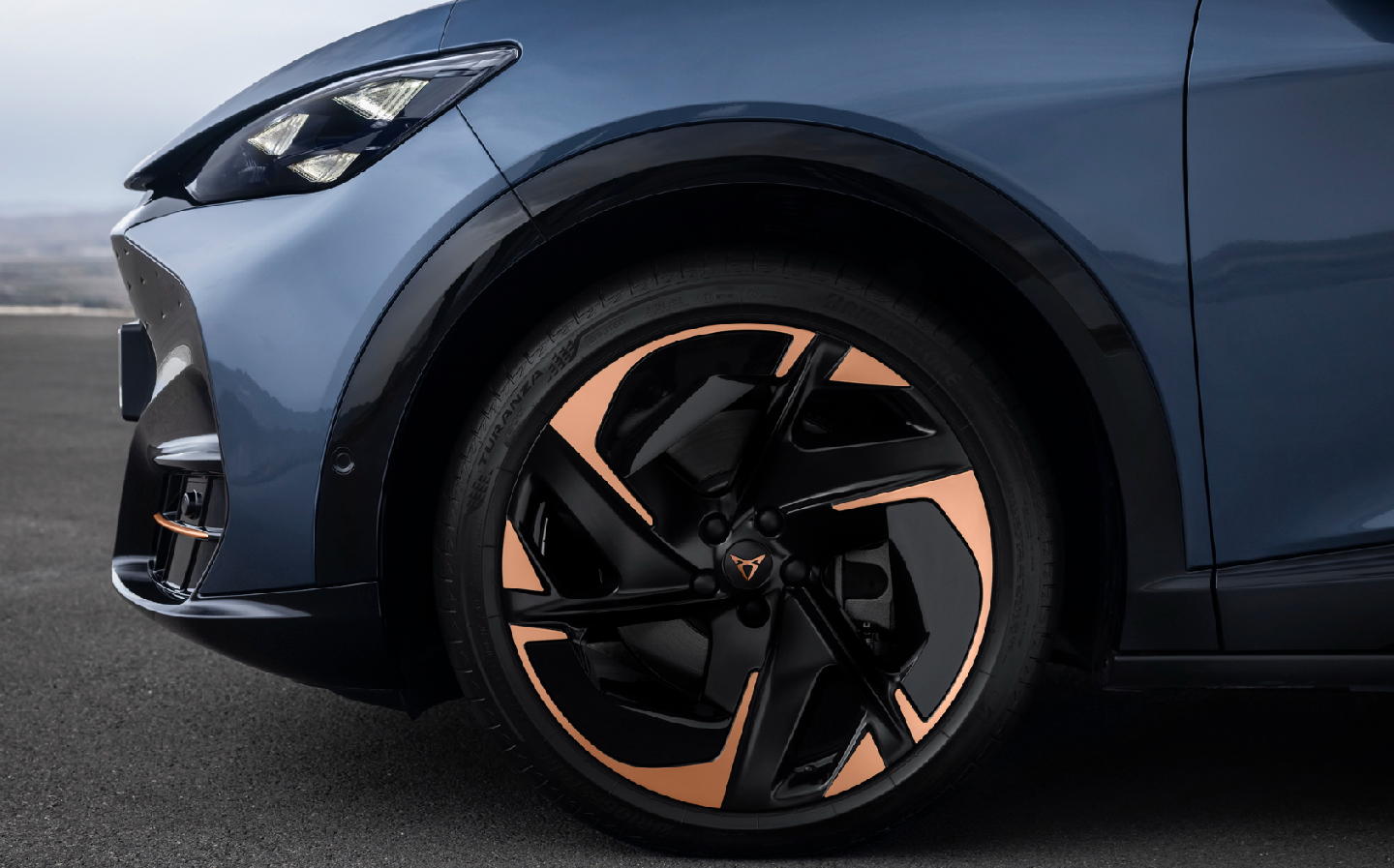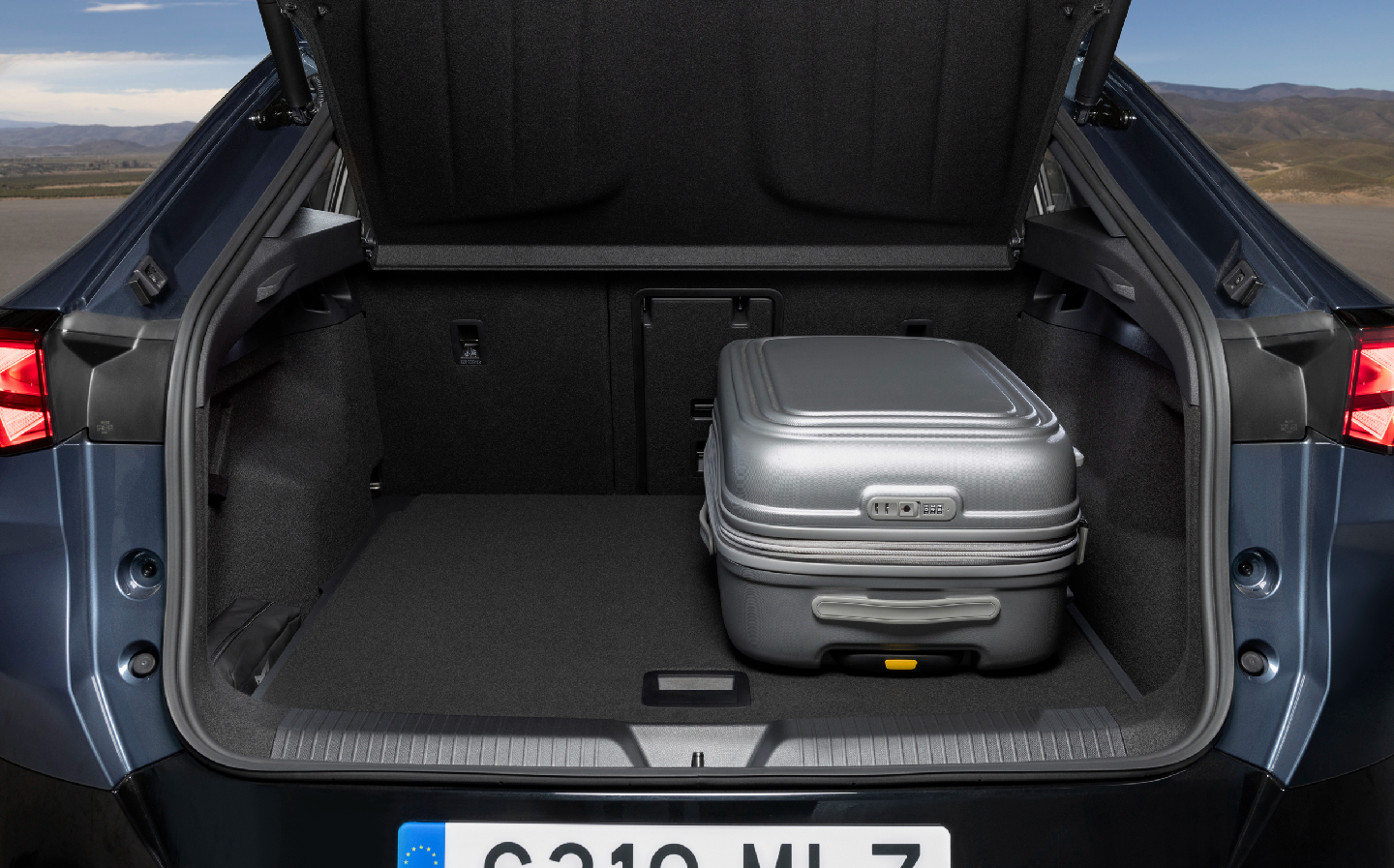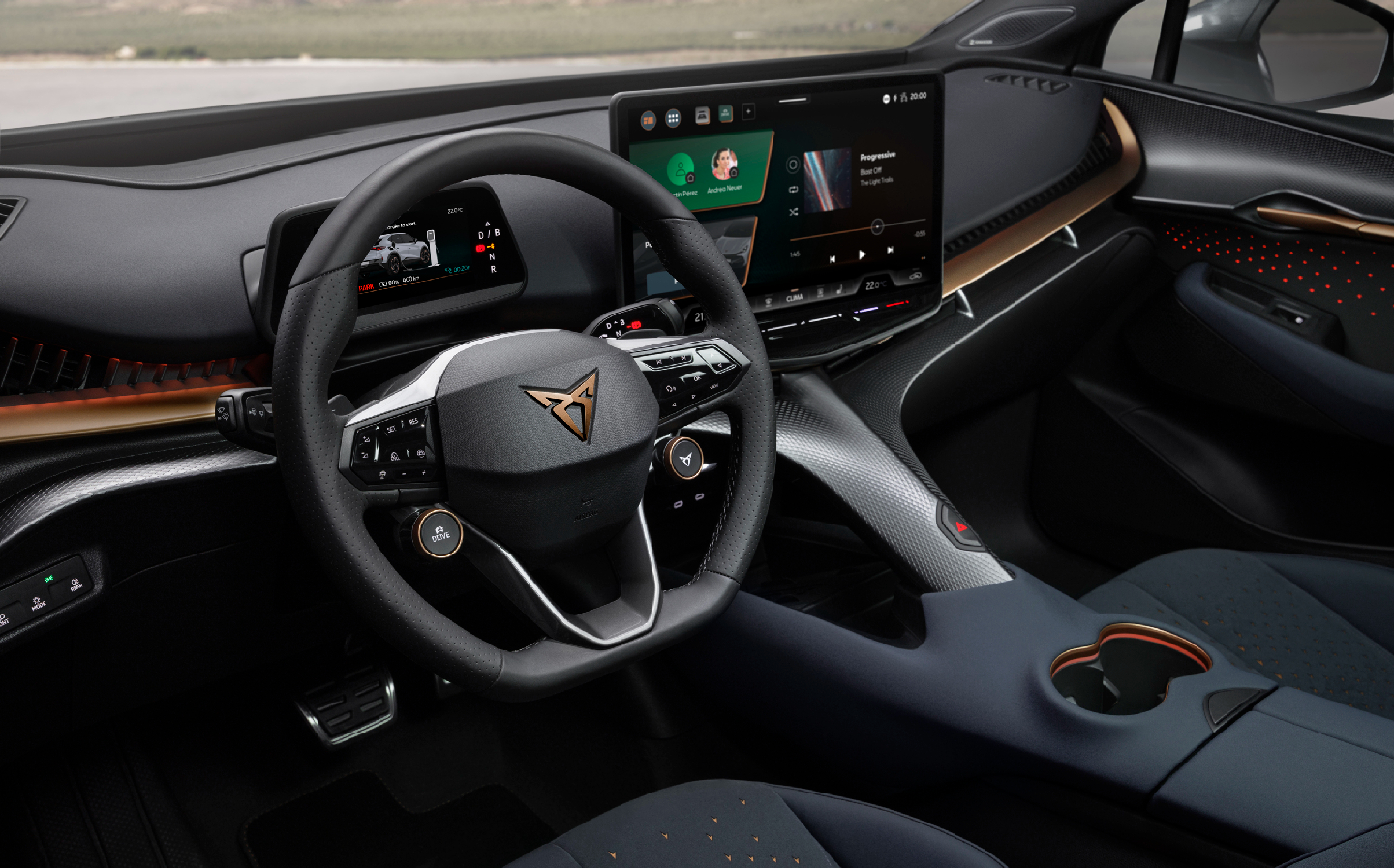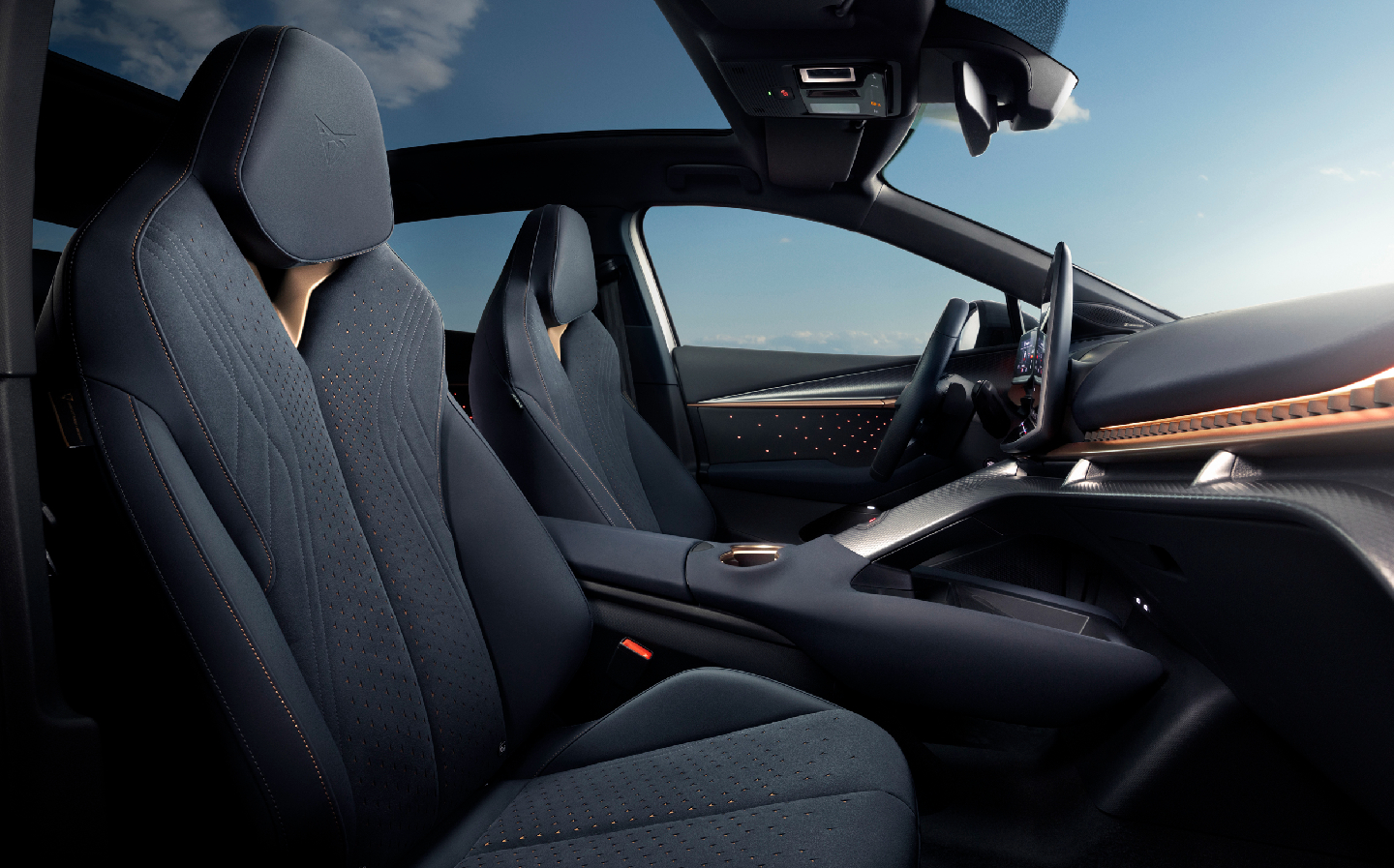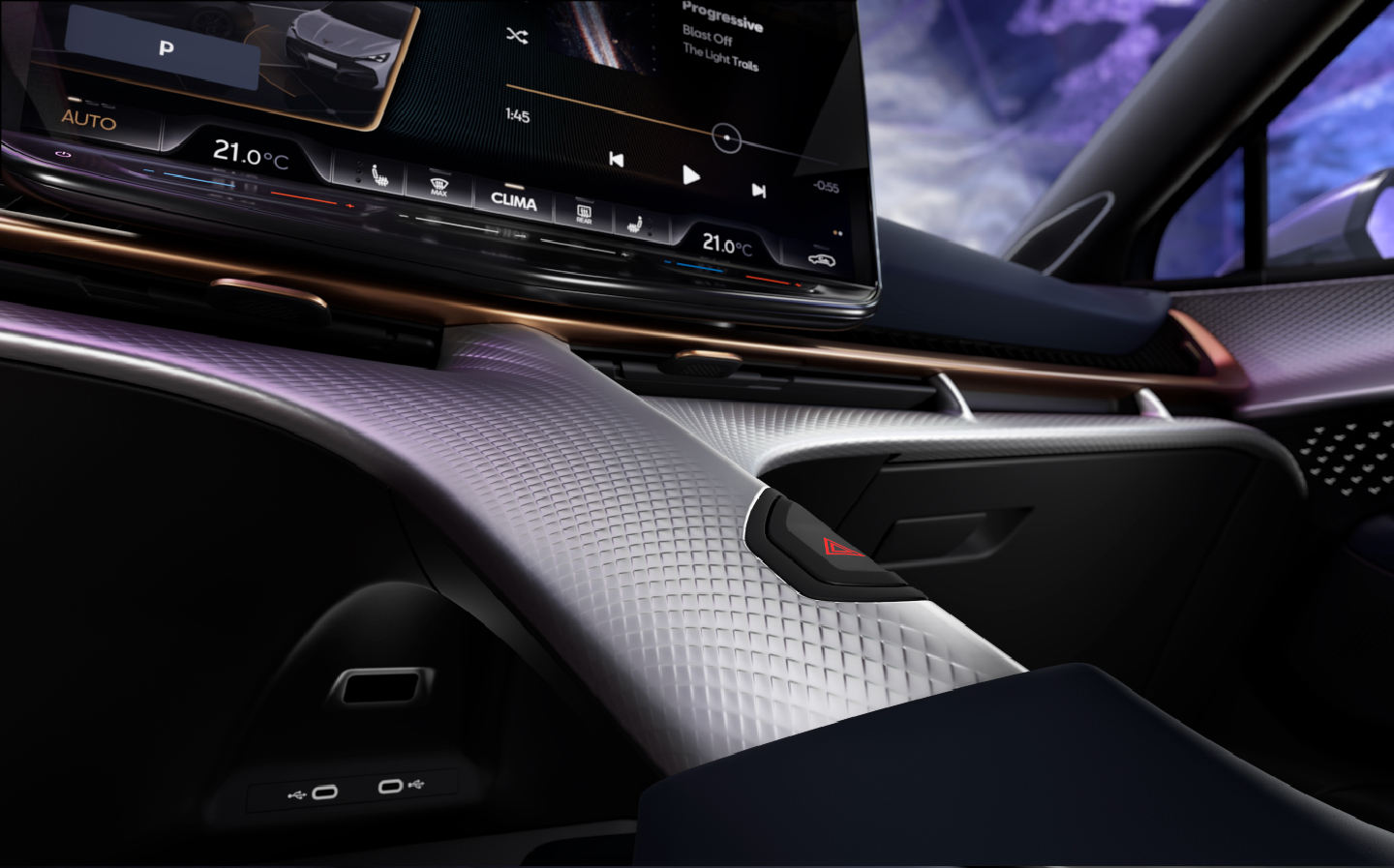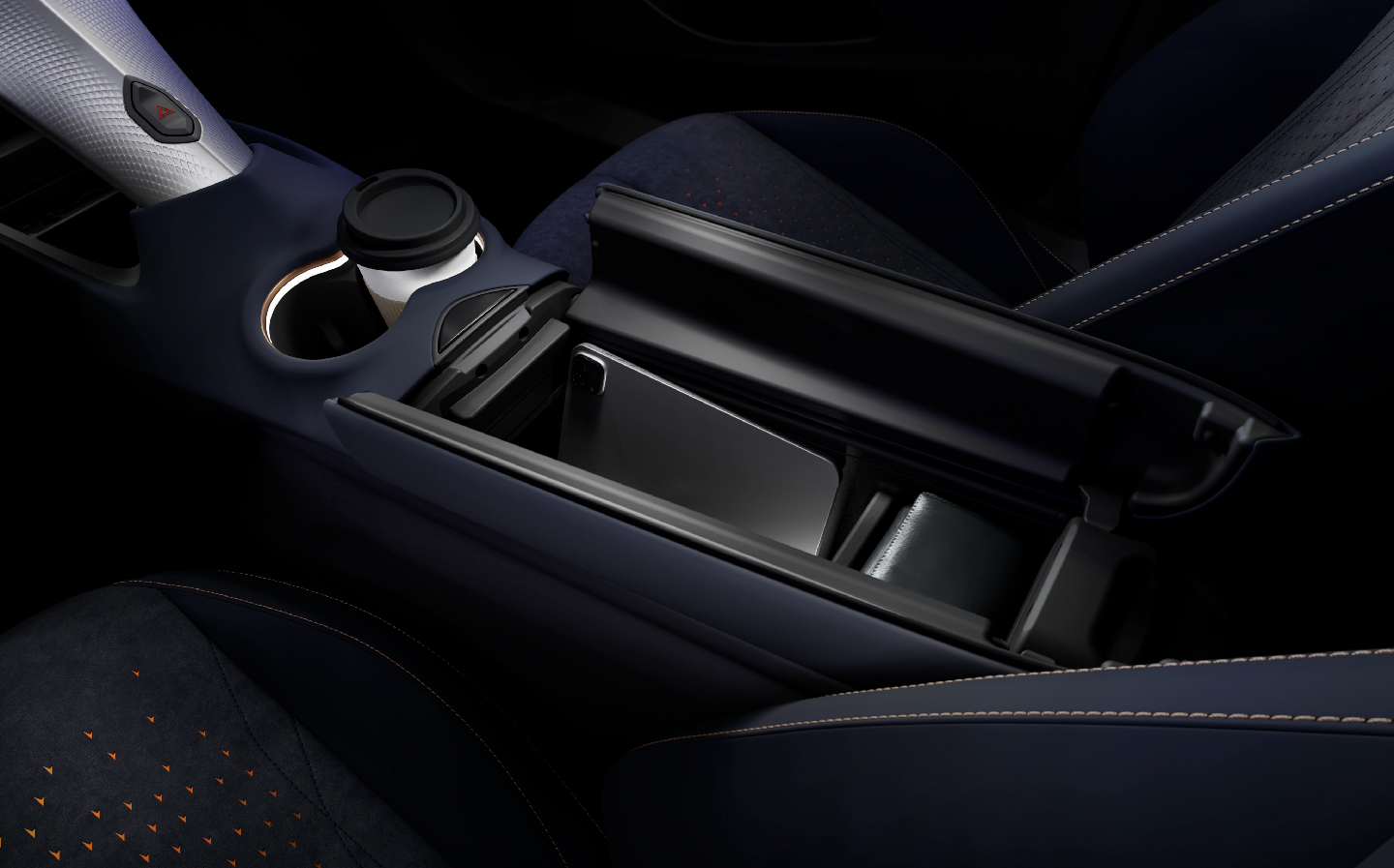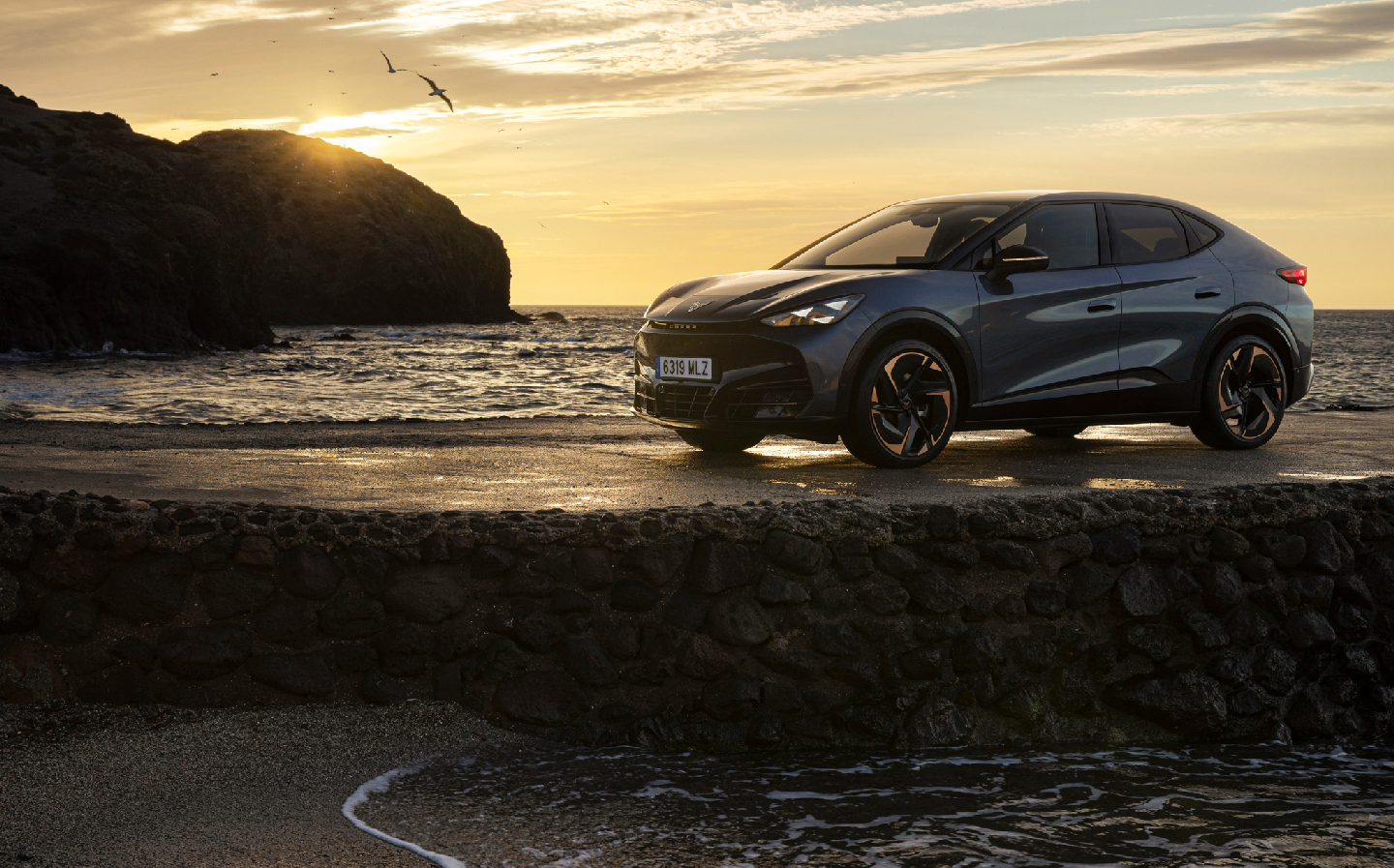Cupra Tavascan 2024 review: Funky electric SUV continues Spanish brand's EV roll
Chocolate-coated vanilla but still leaves a pleasing taste
“There are so many purely rational electric cars coming to the market. That’s not what Cupra is about,” we were told by Wayne Griffiths, the Spanish brand’s CEO, in a briefing document for the new Tavascan electric crossover. Apparently he wasn’t suggesting that Cupra’s EVs are irrational, I don’t think, rather that Cupra is trying to do something a bit different from its rivals.
Its first effort, the Born, meets that brief to some extent, despite being based on the somewhat vanilla Volkswagen ID.3. With a cooler design and a little more punch than the ID.3 it was somewhat of a breath of fresh air when it arrived a couple of years ago. The Tavascan is designed to take the mantra to the next level, as the first in a new line of “emotional vehicles that break convention.”
Call me a cynic but a pure-electric SUV-coupé can no longer be accurately described as convention-breaking, but to be fair to Cupra it has once again come up with an attractive, future-facing car, and it’s pretty faithful to the show car that was shown nearly five years ago.
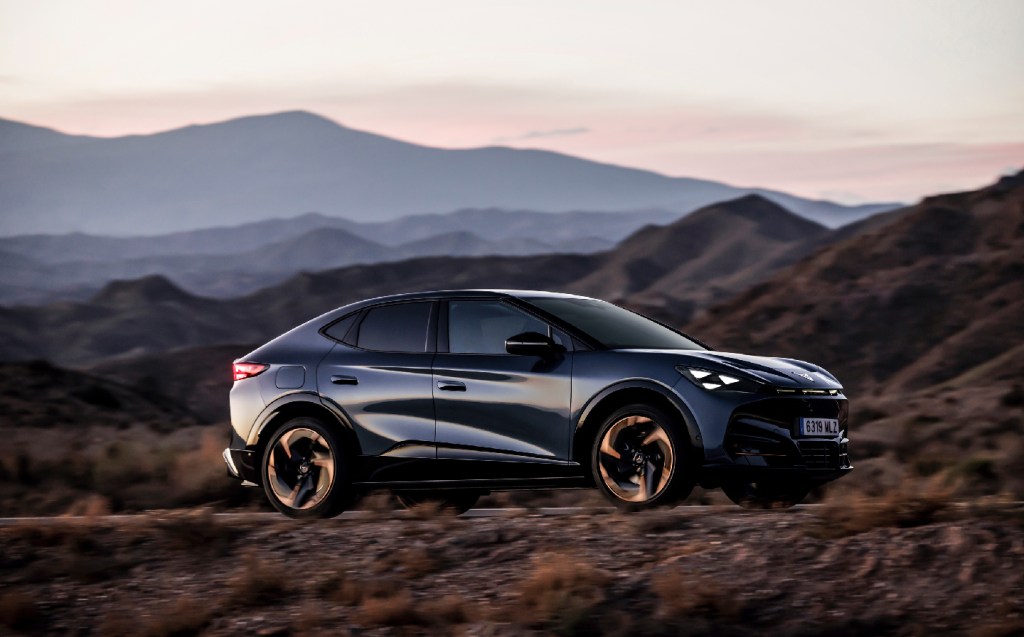
Whopping great wheels dominate the front arches, with an equally oversized grille on the nose, aggressive headlights flanking it and sharp lines along its flank. Illuminated logos front and rear are a nice touch. The wraparound look to the windscreen and side windows, with polished black front pillars, are designed to look like the visor of a race helmet. Marketing speak-loving Cupra calls it “fierce and mysterious”; I call it admirably non-dull.
Its interior, too, is undeniably eye-catching, with a dashboard that swoops down from the slimline vents at the left and right extremes and blends into the centre console in a “central spine”. From the back seats it resembles some kind of robotic owl, and suggests that the Tavascan is not intended to be in any way cute or cuddly; this is a car for the cyberpunk generation.
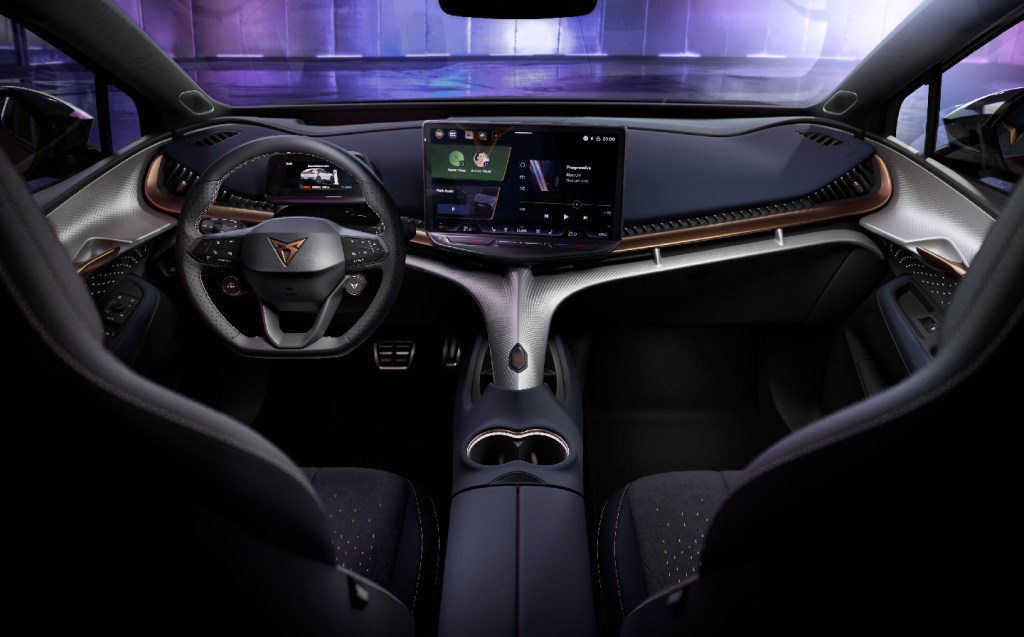
Sci-if aesthetics aside, the interior — which features largely eco-friendly materials (90 per cent recycled polyester and 50 per cent recycled microfibre) — has a couple of useful storage spaces up front, with a wireless charging pad under the spine and centre-split lid for the centre armrest, which means people in the rear can access it almost as easily as those in the front.
However, there’s wasted space underneath the charger, where another storage bin could have been located, and the spine itself actually gets in the way of the phone holder without adding any extra utility.
Standing proud of the dash is a 15in touchscreen — the largest yet for a Cupra and at first glance appears absolutely massive — that features a new operating system, which proved really rather brilliant. Certainly leagues ahead of early Volkswagen Group electric vehicle HMIs (human machine interfaces), to use the jargon, and better even than the improved touchscreens found in the latest VW ID cars. Cupra’s operating system looks slick but is also highly customisable, with widgets that can be selected for easy access with a long press on the screen.
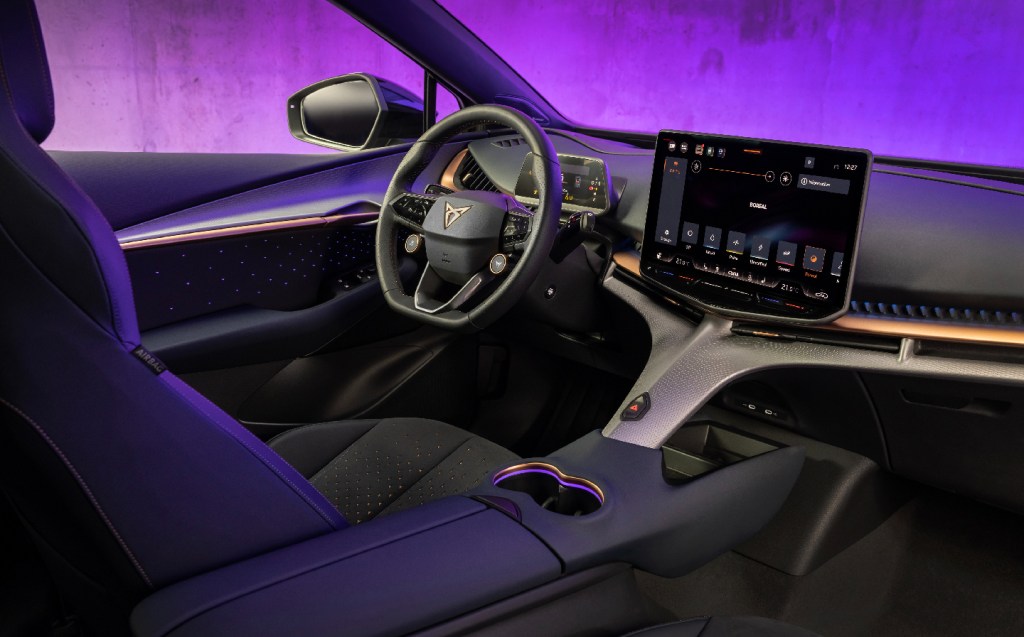
Even better, the nannying driver aids that are now required by default in Europe, such as lane keep assist and speed sign alerts, can be switched off easily by dragging a finger from the top of the screen and tapping the related icon from the quickbar (which is also customisable). The car will reset to having these switched on by default every time you climb out, but in the Tavascan it’s much quicker and easier to switch off than in many cars currently coming to market (we’re looking at you, Volvo EX30).
The Tavascan also gets a new 12-speaker sound system from Sennheiser, offering pretty outstanding fidelity, in my opinion, though one of the social media influenzas [sic] on the trip disagreed so you’ll need to judge for yourself. The system also features noise cancellation in the cabin, via microphones that pick up background sounds and play opposite tones through the speakers. It does result in a satisfyingly hushed experience.
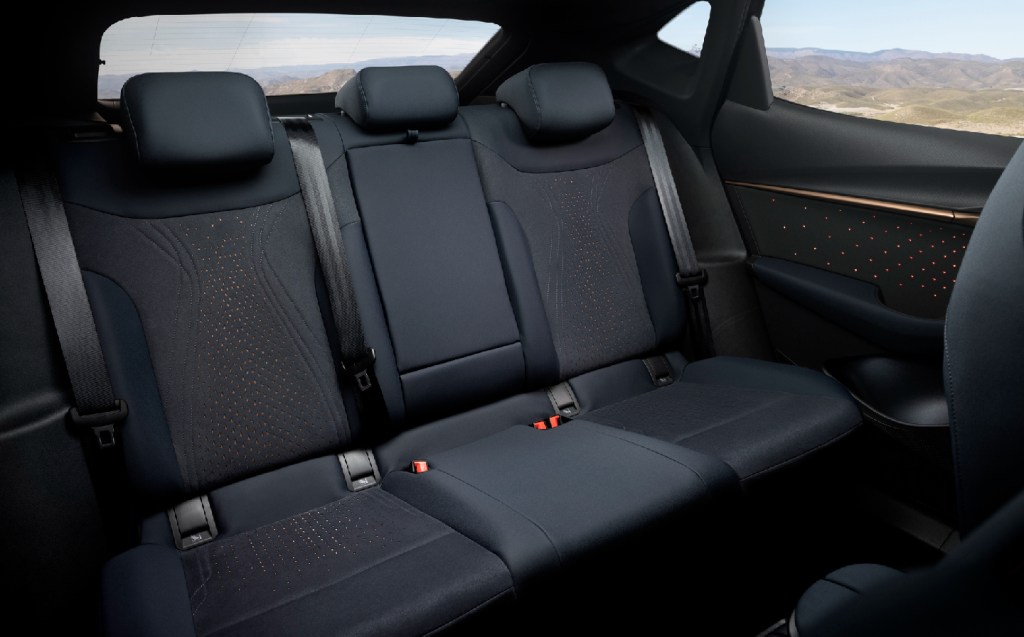
While there’s plenty of space for the driver and front-seat passenger, and the supportive sports seats offer a huge range of adjustment that accommodates even the tallest drivers (I found a very comfortable position for my 6ft 5in frame), those in the back are less lucky. Headroom is just about okay but the underfloor battery means that human adults who dare to have regular-sized legs will find their knees may be above their hip level, while space to the seat in front could be described as acceptable rather than generous. It certainly doesn’t feel any roomier than the Cupra Born hatchback (a new, sportier “VZ” version of which we also drove; review coming soon).
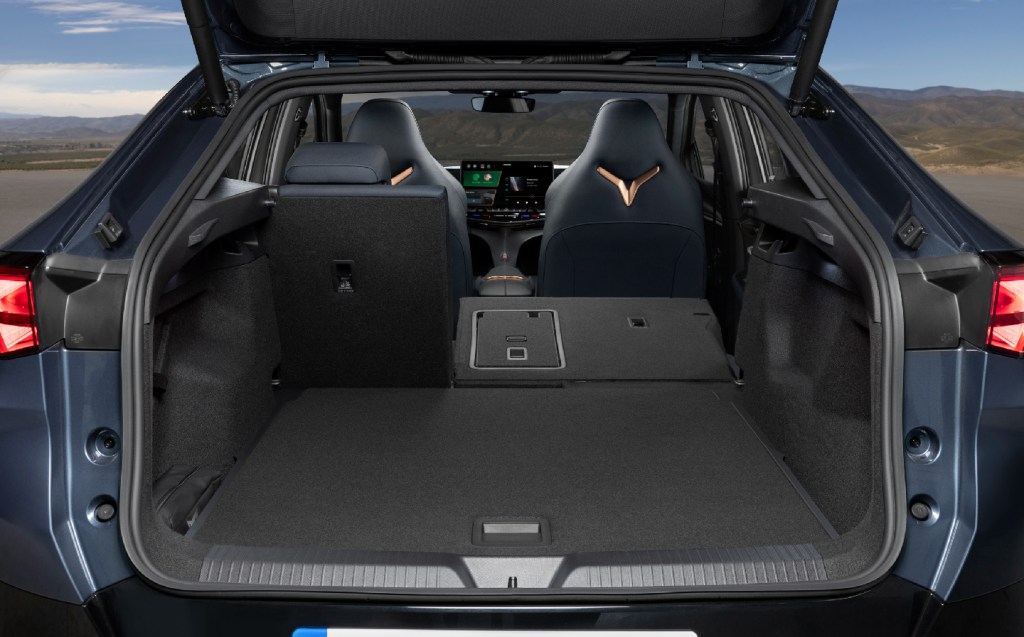
The boot space behind the second row is more accommodating, however. Open the electric tailgate, which includes a useful waggy foot sensor for when your hands are full, and you’ll find 540 litres of luggage space. That’s very handy indeed, and is not far off rivals such as the VW ID.5 and Skoda Enyaq Coupé, though the king of luggage is still the Tesla Model Y. Good if you can handle being seen driving a Elon Musk-mobile.
As with all carmakers, Cupra makes a virtue of its various driver assistance systems in its press info. I won’t bore you with all the details here but of note is the Connected Travel Assist, which gathers data from radar, cameras and ultrasonic sensors, and combines that with live information about road conditions from the cloud to help keep the car in lane and assist steering while using the advanced cruise control. It seemed to know when we were on twisty roads and relaxed the lane-keeping system, which is very welcome.
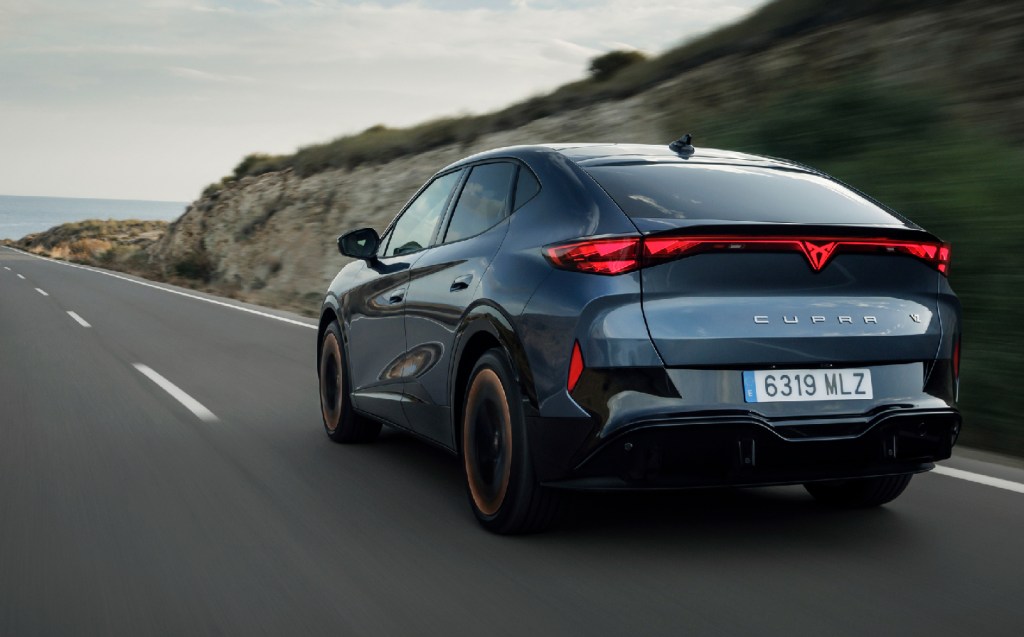
It also enables automated lane changes, and that also seemed to do its job without much fuss, proving vastly superior to the hesitant system that Tesla has developed. The Tavascan feels like it is working with you, rather than against you.
Most drivers will feel content behind the wheel, though the high driving position may jar with the keen motorists to whom the Cupra brand wants to appeal. And while the ride quality of the Tavascan VZ we tested (the latter letters designating Cupra’s sportier derivatives) is decent enough, certainly on the smooth Spanish roads around Barcelona, don’t expect the Tavascan to feel especially sporty compared to the VW ID.4 or ID.5. In terms of dynamics the VZ is closer to the lukewarm ID.4 GTX, with little in the way of body roll through turns but unpleasant cross-chassis ripples from mid-corner bumps in the road.
Performance is most definitely ample in the Cupra Tavascan VZ, which has dual motors and a total output of 335bhp, with up to 30 per cent of that through the front wheels. That aids both traction and acceleration — expect to hit 62mph from standstill with the VZ in as little as 5.5sec, which makes it just a tenth of a second slower than the most powerful Audi Q4 e-tron, and quicker than a petrol-powered VW Golf GTI.
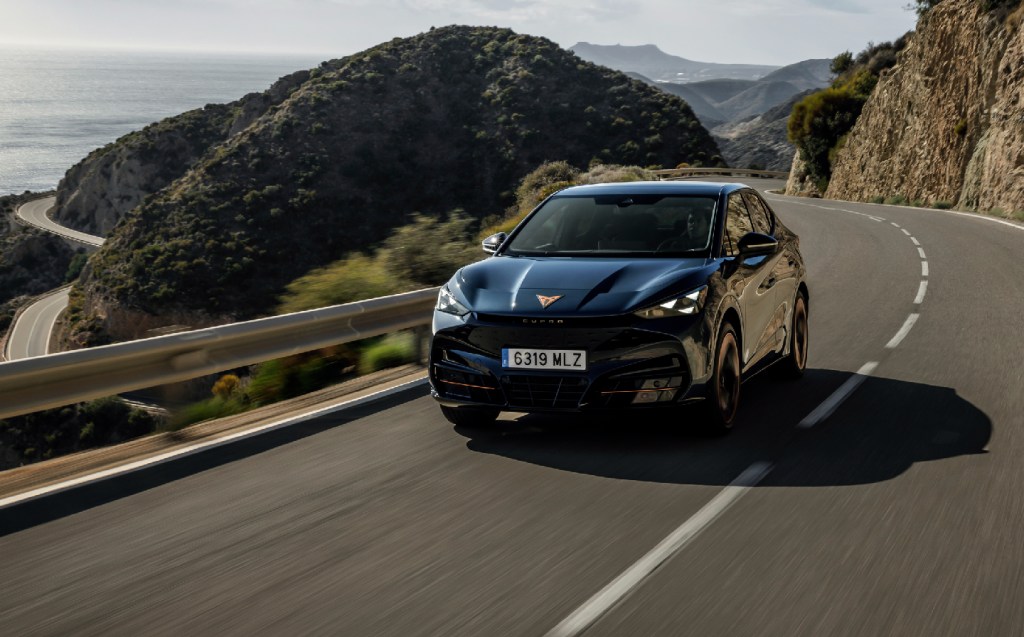
I didn’t get to drive the entry-level Tavascan but it does away with the 107bhp motor driving the front wheels of the VZ, leaving the 282bhp electric motor driving the rear wheels. That should still feel pretty decent in performance terms, and its 0-62mph time of 6.8sec matches that of the similarly-sized BMW iX3.
Both versions of the Tavascan use the same underfloor battery pack, with a usable capacity of 77kWh, though as expected the single motor model can go further on a charge. Its official range of 353 miles means it should be able to go 29 miles further between top-ups than the Tavascan VZ.
As always, official range figures should be taken with a pinch of salt — the WLTP test is conducted in a laboratory at a constant 23C, so expect colder weather on real roads in Britain to result in reduced ranges. But, as a guide, I can tell you that on mostly motorways and towns around Barcelona, after 68 miles the Tavascan VZ’s battery had gone from 95 per cent capacity and a predicted range of 276 miles to 77 percent and 213 miles. Taking the second reading we can estimate a full charge would be good for 277 miles, and the rear-wheel-drive model should achieve closer to 300. But there are many variables so, as with other EVs, you’ll need to suck it and see.
One thing our car had was a heat pump, which works like a reverse fridge to warm the cabin without sapping too much energy. That’s not standard fitment across Europe but it’s basically an essential in the UK and other countries that aren’t blessed with year-round warm weather, so I’d be surprised if it wasn’t made standard over here.
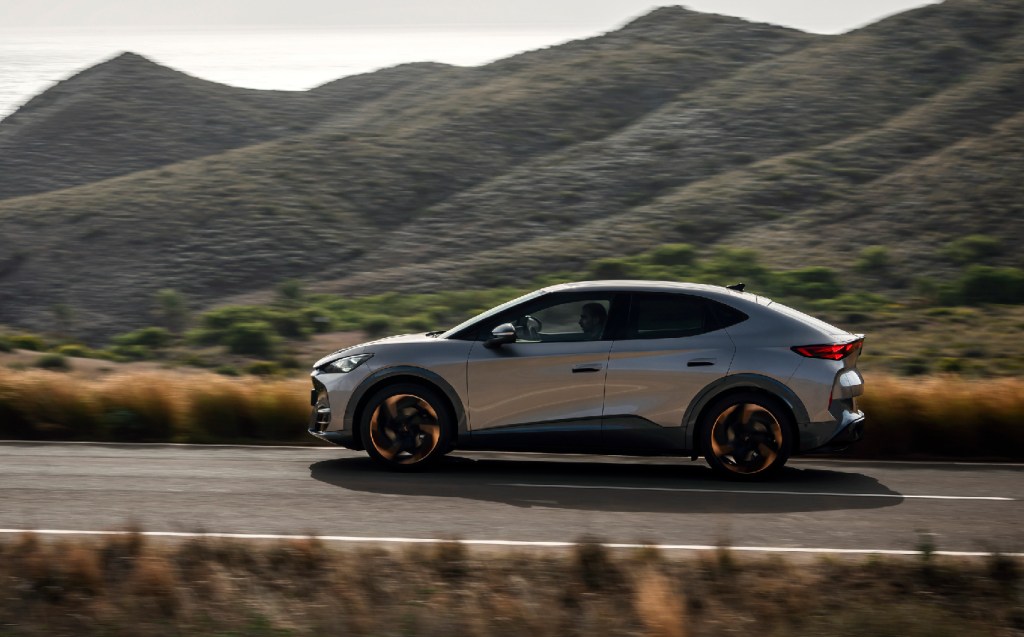
When you do need to charge up, the Tavascan has AC charging at 11kW (which is home wallbox and “destination charging” speed) and rapid DC charging at 135kW, which should take the battery from 10 per cent to 80 per cent in just under half an hour, given ideal conditions.
With prices for the China-built Tavascan expected to start at £47,300 when it goes on sale in July, it’s competitive with the VW ID.5, which costs from £45,860. Given that the sportier ID.5 GTX attracts a premium of around £10,000, expect the Tavascan VZ prices to be similarly hiked.
If I were looking at an electric car in this bracket, though, there are a lot of rivals out there these days. The VW Group also offers the Skoda Enyaq iV, which is definitely the pick over an ID.5, as well as the slightly more upmarket (but ultimately underwhelming) Audi Q4 e-tron. Then there are the Ford Mustang Mach-E (sporty), Kia EV6 and Hyundai Ioniq 5 (both come with high voltage electric outlets to power devices), Tesla Model Y (cavernous), Peugeot e-3008 (funky) and new Renault Scenic (good all-rounder), among others.
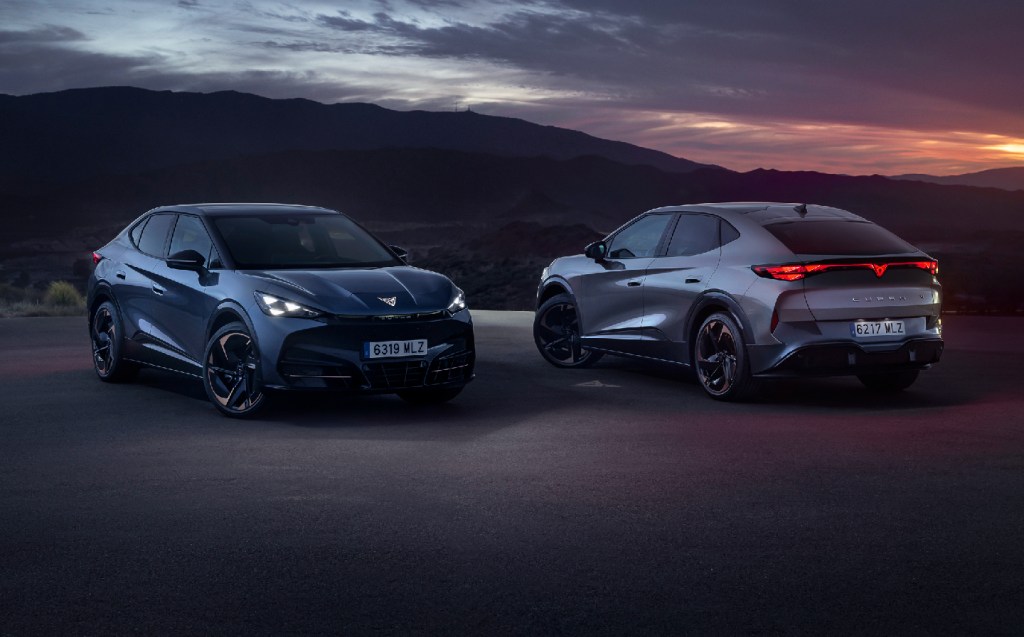
All of which means the Tavascan has a tough job on its hands to attract buyers, though is more interesting than most other VW Group efforts and the Cupra brand is currently one of the coolest out there (despite the exhausting marketing speak). And while somewhat less thrilling than the eye-catching design suggests, it’s actually a more rational choice than Cupra’s boss suggests.
Will can be found on Bluesky
Related articles
- If you were interested in this review of the 2024 Cupra Tavascan electric SUV, you might like to check out what we said about the Skoda Enyaq iV vRS
- Also check out our Kia EV6 review
- Five best electric cars to buy in 2024
Latest articles
- Should I buy a diesel car in 2025?
- F1 2025 calendar and race reports: The new Formula One season as it happens
- Zeekr 7X AWD 2025 review: A fast, spacious and high tech premium SUV — but someone call the chassis chief
- Denza Z9GT 2025 review: Flawed but sleek 1,062bhp shooting brake from BYD’s luxury arm
- Extended test: 2024 Renault Scenic E-Tech review
- Best-selling cars 2025: The UK’s ten most popular models of the year so far
- Audi A6 Avant 2025 review: Trusty executive estate ticks expected boxes, and there’s still a diesel option
- Keir Starmer eases pressure on carmakers to sell EVs in response to ‘global economic headwinds’
- Ferrari 12Cilindri Spider review: Heady blend of traditional and futuristic becomes even more intoxicating after lid is removed







